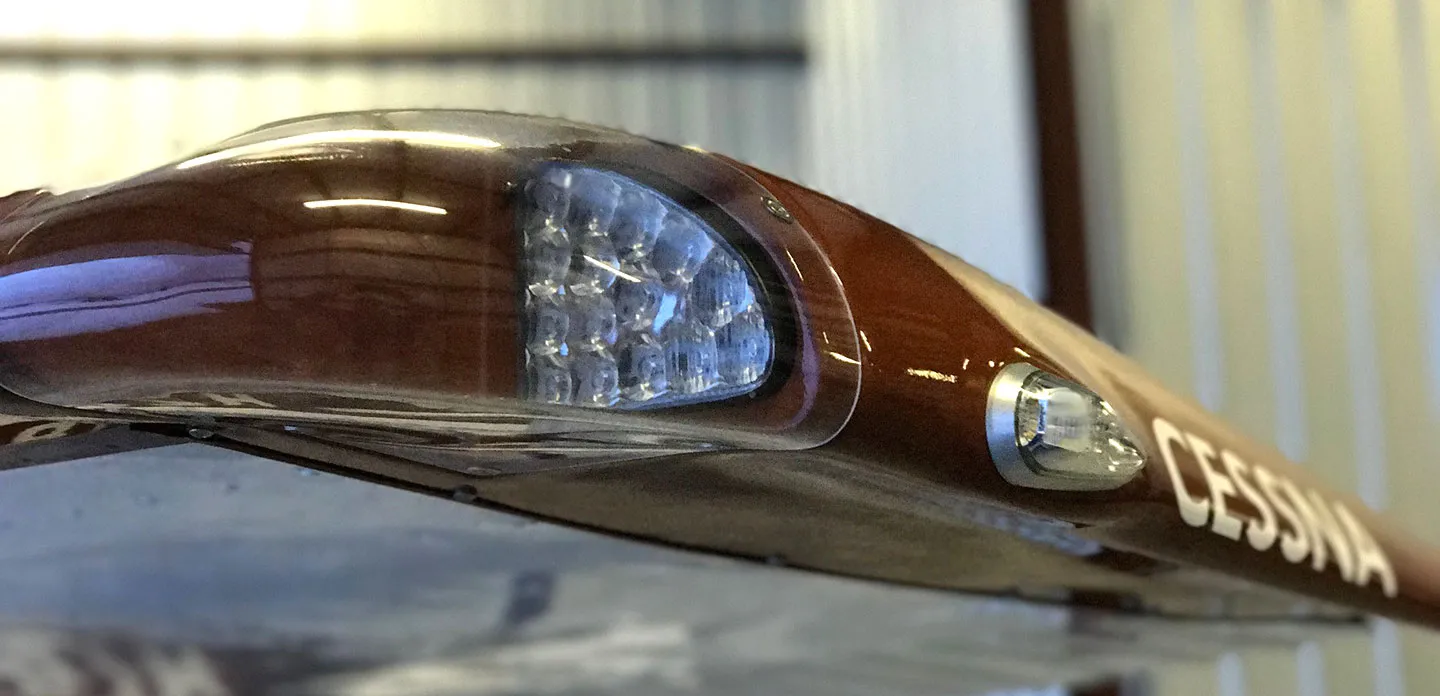ACHIEVING “FIRST TIME RIGHT”
Since implementing the integrated SOLIDWORKS electronic design ecosystem, AeroLEDs has cut its development cycles in half. “With SOLIDWORKS and SOLIDWORKS PCB software, we’ve reduced the PCA/PCB import process from a 15 to 30-minute process that resulted in ‘rough models’ of 30 percent of the components to a 5-minute import process of 100 percent of the components at 100 percent accuracy. It’s a game changer,” Calvin says.
“This transition has accelerated development, while improving quality and increasing collaboration, because we achieve ‘ rst time right’ consistently,” Calvin continues. “For example, I can take a board from our electrical engineer into SOLIDWORKS, and find all of the interference issues, and suggest 10 changes when I send it back to him. He’ll then accept 8 of the 10 changes and confer with me about addressing the other two. Perhaps I moved something, and he’ll report that ‘moving the component violates layout rules, but I can deal with the interference from the mechanical side and modify accordingly.’ Since implementing SOLIDWORKS and SOLIDWORKS PCB, we haven’t had to produce more than one board revision for clearance issues or modify a mechanical component. We get it right the first time.”
SAVING MONEY IN ADDITION TO TIME
By eliminating production of prototype boards as the means for resolving design issues, AeroLEDs is saving money, which Calvin estimates at $1,000 per circuit board. The company has also realized a 50 percent reduction in scrap and rework costs overall. “Working on the same SOLIDWORKS platform and taking data conversion out of the process has a ripple effect that lowers development costs,” Calvin notes. “In addition to checking clearances in SOLIDWORKS, we run motion, structural, aiflow, and thermal analyses to validate performance prior to production.
“Another ripple effect is the ability to automatically generate all electronic and mechanical BOM [bill of materials] information, which previously we had to do separately,” Calvin adds. “The integrated SOLIDWORKS design environment simply gives us more confidence in our design documentation and provides better design visualization for communicating with production.”
GROWING PRODUCT DEVELOPMENT THROUGHPUT
The productivity gains that AeroLEDs has realized since adding SOLIDWORKS PCB software to its SOLIDWORKS installation have enabled the company to cost-effectively manage growth as it expands its product offering. “Since implementing SOLIDWORKS PCB software, we operate at a drastically faster pace,” Calvin stresses.
“In 12 months’ time, we’ve averaged a new product design and release every two weeks,” Calvin says. “We can make greater use of design reuse while speeding up development and improving quality. With the integrated SOLIDWORKS electronic design ecosystem, what you see is what you get!”
